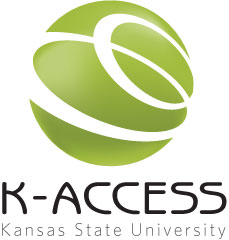 You can compose a document for a class you are teaching on your phone, iPad, netbook, tablet PC, iPod, or on the desktop computer in your office. You can even edit files online or on one of your devices. But have you ever thought about the structure of your documents? Did you know that many people depend not on the format of the document, but on the code that builds your document’s structure? Content for your course only begins with aesthetics. Underneath the Word document, PowerPoint, or PDF lies amazing amounts of code. Depending on the software and tools you use to create your document, you can choose whether a graphic is only read by human eyes or you can create content with usable text that can be read by a computer for someone with a disability. (Read more about screen readers next month!)
You can compose a document for a class you are teaching on your phone, iPad, netbook, tablet PC, iPod, or on the desktop computer in your office. You can even edit files online or on one of your devices. But have you ever thought about the structure of your documents? Did you know that many people depend not on the format of the document, but on the code that builds your document’s structure? Content for your course only begins with aesthetics. Underneath the Word document, PowerPoint, or PDF lies amazing amounts of code. Depending on the software and tools you use to create your document, you can choose whether a graphic is only read by human eyes or you can create content with usable text that can be read by a computer for someone with a disability. (Read more about screen readers next month!)
Why worry? Making accessible documents is not only good practice for teaching (more on this later), it is also the law. The Americans with Disabilities Act Amended and Section 508 of the Rehabilitation Act state that all federal agencies are required to make their content accessible. Kansas has even gone so far as to pass the Information Technology Policy 1210, Web Accessibility Requirements, intended “[to] establish a State of Kansas policy regarding accessibility requirements for all State of Kansas internet, intranet, and extranet websites, web services, and web applications, including those that are developed internally, developed via contract, provided by third parties on behalf of state Entities, or purchased products.” (http://www.da.ks.gov/kito/itec/Policies/itecitpolicy1210.htm)
Legalese aside, it is also good practice to understand just what accessibility brings with it. By creating an accessible document, you are making that document search-able by many other kinds of technology. An accessible PDF can be used by students as an incredible study aid; students can search large documents for keywords, highlight, and annotate with many inexpensive tools to enhance studying. What makes this content accessible is that it can be read by adaptive technology: screenreaders and text-to-speech programs. These programs read files to students who are blind or have learning disabilities. The programs also allow students with ADD/ADHD to highlight and annotate files and organize material for improved recall on an exam. Students who speak English as a second language also find it helpful to hear what they are reading, increasing their English Proficiency!
Not sure what to do? K-Access can help.
At K-Access, we are building a number of handouts to help you create accessible documents. Here you will find steps to making PDF, Word, PPT, and other files accessible to students with disabilities in your class. These steps will help you in the creation of your documents so that you can build documents that are accessible from the ground up, rather than retrofitting later under a short deadline. We also have pages that can help you understand how and why accessibility is important to your students with disabilities.
Building an online course and need transcripts? K-Access can help. We also have information on webpage and software accessibility. While many programs used with students are accessible, it is never a good idea to assume. We have a list of questions on our site to help you find out about the accessibility of products you will be using with students.
Stop on by and visit K-Access today!